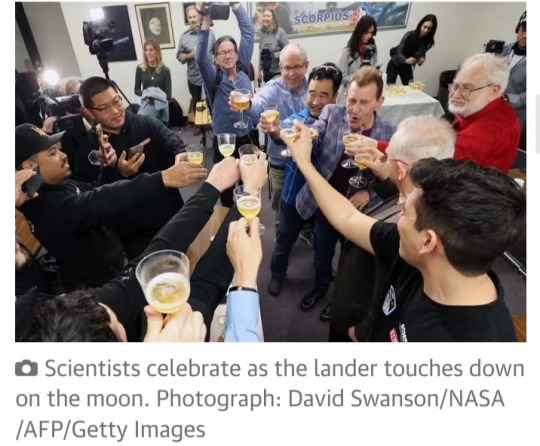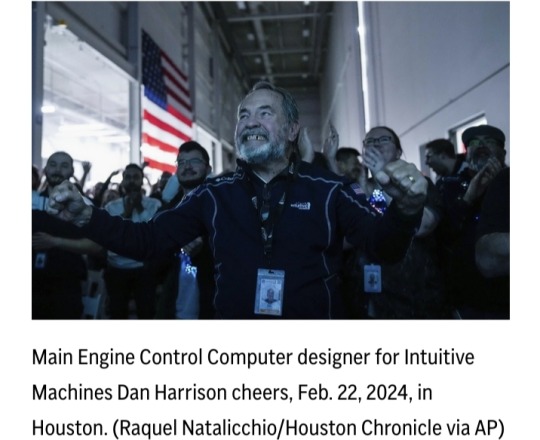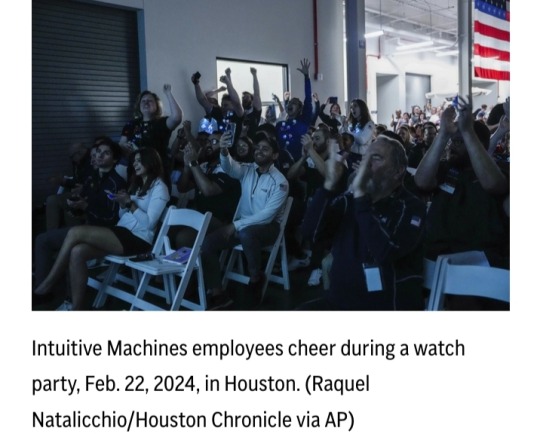#NASA CLPS
Explore tagged Tumblr posts
Video
youtube
Blue Ghost Moon Landing - 4 Incredible Angles of Firefly's Lunar Touchdown
I was very excited during the BlueGhost Mission, It was amazing! Here is some background on Blue Ghost ands the mission:
Blue Ghost Mission 1: Firefly’s Historic Lunar Landing
Firefly Aerospace’s Blue Ghost Mission 1, dubbed "Ghost Riders in the Sky," marked the first fully successful commercial soft landing on the Moon. Launched on January 15, 2025, and landing on March 2, 2025, it delivered 10 NASA payloads to Mare Crisium under the CLPS program. Here’s the scoop!
Mission Highlights
Launch: Jan 15, 2025, via SpaceX Falcon 9 from Kennedy Space Center.
Landing: Mar 2, 2025, at Mons Latreille, Mare Crisium.
Duration: ~60 days, with 14+ days of surface ops, surviving 5 hours into lunar night.
Data: Transmitted 119 GB, including 51 GB of science data.
The Lander
Named after the Phausis reticulata firefly, Blue Ghost is a 2m-tall, 3.5m-wide lander with:
Carbon composite structure for lightweight durability.
Three solar panels (400W) and robust X/S-band antennas for HD video.
1,000N main engine + eight 200N thrusters for precise landing.
Payloads
Carried 10 NASA payloads (94 kg), including:
RAC: Studied regolith stickiness.
NGLR: Enabled precise Earth-Moon distance measurements.
Lunar PlanetVac: Collected and sorted lunar soil.
LISTER: Drilled 3ft into the subsurface (hit hard rock).
SCALPSS 1.1: Captured 3D plume-surface imagery.
Eight payloads met objectives by Mar 6, 2025, supporting Artemis goals.
Cool Moments
Lunar Sunset: HD imagery of dust levitation on Mar 16, 2025.
Solar Eclipse: Captured a “diamond ring” effect on Mar 13-14, 2025.
First Images: Sent lunar surface pics 40 mins after landing.
Why It Matters
Blue Ghost’s upright landing and extended ops set a new bar for commercial lunar missions, paving the way for Artemis and future exploration. Firefly plans more missions in 2026 and 2028.
Check out more at Firefly Aerospace or NASA. Pics and videos on Firefly’s Flickr!
#youtube#blueghost#firefly#space m o o n that spells moon#moon#space#m o o n that spells moon#BlueGhostMission#Blue Ghost Mission#FireflyAerospace#Firefly Aerospace#MoonLanding#Moon Landing#NASACLPS#NASA CLPS#ArtemisProgram#Artemis Program#SpaceExploration#Space Exploration#LunarScience#Lunar Science#CommercialSpace#Commercial Space#MareCrisium#Mare Crisium#SpaceX#Space X#LunarLander#Lunar Lander#SpaceTech
2 notes
·
View notes
Text
Intuitive Machines IM-2 On Its Side, Mission Ends
Intuitive Machines Nova-C class IM-2 lunar lander “Athena” on its side on the lunar surface. Photo: Intuitive Machines. Yesterday, Intuitive Machines Nova-C class IM-2 lunar lander “Athena” touched down on the lunar surface safely, but in a position feared to be suboptimal. Yesterday, Intuitive’s CEO Steve Altemus said in his remarks, “We don’t believe we’re in the correct attitude on the���

View On WordPress
0 notes
Text

#Flickr#nasa#nasasmarshallspaceflightcenter#nasamarshall#marshall#msfc#moon#clps#commerciallunarpayloadservices#blueghostmission1lander
14 notes
·
View notes
Text









Besides sharing the imagery, Blue Ghost has 10 NASA science and technology instruments aboard as part of the space agency’s Commercial Lunar Payload Services, or CLPS, initiative.
CLPS is part of NASA’s broader Artemis program, which aims to land astronauts on the moon for the first time in more than 50 years.
The instruments are currently working to collect data primarily on the moon’s subsurface, such as lunar dust and regolith, the loose rocks and mineral fragments that cover the lunar surface.
Shortly after the sunset, the lander will continue to operate for several hours during the lunar nighttime before the period of darkness and cold temperatures are expected to cause the spacecraft to cease operations.
#solar eclipse#blue ghost#lunar lander#diamond ring effect#spacecraft#lunar landing#firefly aerospace#x-band antenna#lunar horizon glow#apollo 15#apollo 17#astronauts#lunar sunsets#Commercial Lunar Payload Services#CLPS#NASA#artemis#moon#lander
7 notes
·
View notes
Video
Blue Ghost Remains on Track, Lunar Orbit Insertion Burn Complete by NASA's Marshall Space Flight Center Via Flickr: After about a month in transit to the Moon, Firefly’s Blue Ghost lunar lander successfully completed a four-minute lunar orbit insertion burn Thursday – the longest and most challenging burn conducted to date by the lander’s main engine and reaction control system thrusters. Now that the lander is in lunar trajectory, over the next 16 days, additional maneuvers will take the lander from an elliptical orbit to a circular orbit around the Moon. Blue Ghost Mission 1 is targeted to land Sunday, March 2, at 3:45 a.m. EST. During the lunar orbit insertion burn, Blue Ghost captured a picture of the Moon’s South Pole. Here, Blue Ghost captured a bright image of the Moon’s South Pole on the far left through its cameras on the top deck, as it travels to the Moon as part of NASA’s CLPS (Commercial Lunar Payload Services) initiative and Artemis a campaign. Credit: Firefly Aerospace #NASAMarshall #NASA #NASA #moon #CLPS #CommercialLunarPayloadServices #Lander #LunarLander Read more Read more about irefly’s Blue Ghost Mission 1 Read more about NASA’s CLPS (Commercial Lunar Payload Services) NASA Media Usage Guidelines
#NASA#NASA's Marshall Space Flight Center#NASA Marshall#Marshall#MSFC#Moon#CLPS#Commercial Lunar Payload Services#flickr
0 notes
Text
Meet the Johnson CLPS Team Supporting NASAs Lunar Exploration Goals
As part of NASA’s Artemis campaign, the Commercial Lunar Payload Services (CLPS) initiative, managed out of Johnson Space Center in Houston, is paving the way for conducting lunar science for the benefit of humanity. Through CLPS, NASA teams worked closely with commercial companies to develop a new model for space exploration, enabling a sustainable return […] from NASA https://ift.tt/ewQOfnq
0 notes
Text
Firefly Tarih Yazdı: Blue Ghost Uzay Aracı Ay’a Başarıyla İndi!
🚀 Firefly Aerospace, Blue Ghost uzay aracıyla başarılı bir Ay inişi gerçekleştirdi! 📌 NASA’nın CLPS programı kapsamında finanse edilen görev, iki hafta sürecek bilimsel araştırmalara zemin hazırlıyor.📌 Firefly, Ay’a iniş yapan ikinci özel şirket olarak uzay tarihinde yerini aldı!📌 Çin ve ABD arasındaki Ay yarışı hız kazanıyor! 🔥 Bu tarihi görev, uzay keşifleri açısından kritik bir dönüm noktası…
0 notes
Text
Kelly Kizer Whitt - New lunar lander Athena launches to the moon:
Athena #IntuitiveMachines #LunarLander #MonsMounton #NASA #CommercialLunarPayloadServices #CLPS #WaterOnMoon #WaterIce #LunarExploration #SolarSystemScience #Astronomy
#athena#intuitivemachines#lunarlander#monsmounton#nasa#commerciallunarpayloadservices#clps#wateronmoon#waterice#lunarexploration#solarsystemscience#astronomy
0 notes
Text
SciTech Chronicles. . . . . . . . .Feb 16th, 2025
#quantum#time#direction#time-reversal#vaccinations#inflammation#Optum#Alzheimer’s#cumulonimbus#anvil#back-sheared#updraft#Theia#bombardment#volcanism#radioactive#Firefly#lander#CLPS#NASA
1 note
·
View note
Text
Ngl CLPS sounds terrible
I like the.... concept of visiting the moon to study it further. I don't like, that it's worded like we're gonna be fucking inhabiting the moon and we're setting up Interplanetary Amazon
#this is mostly a joke#mostly#ffs#i dont like that its only American companies#america doesnt have a great track record with its companies#clps#nasa
0 notes
Text
Агентство заключило контракт по программе CLPS с компанией Intuitive Machines. Соглашение на сумму 116,9 миллиона долларов предполагает доставку набора из шести научных инструментов в южную полярную область Луны в 2027 году. Платформа Nova-C доставит 79 килограммов полезной нагрузки. Четыре инструмента будут предоставлены NASA, один – Университетом Колорадо, еще один – ESA. Последний включает в себя бур для изучения летучих веществ, находящихся на глубине до одного метра под поверхностью. Этот контракт стал четвертым для Intuitive Machines по программе CLPS. Это больше, чем у любой другой компании, вошедшей в эту программу. У Astrobotic и Firefly Aerospace по два контракта, еще один – у Draper. Агентство, напомним, планирует в среднем заключать по два соглашения в год на доставку научных инструментов на поверхность Луны. Напомним, что Intuitive Machines свою первую миссию выполнила, и она оказалась частично успешной, поскольку модуль Odysseus совершил посадку, но упал, хоть и продолжил некоторое время работать. В этом году планируется запуск второй миссии Intuitive Machines по программе CLPS, а также отправка на Луну модуля Blue Ghost от Firefly.
0 notes
Text
Seis instrumentos de la NASA volarán a la Luna en un módulo de aterrizaje de máquinas intuitivas
¡Es una noticia emocionante! La misión de Intuitive Machines a la Luna, programada para 2024, llevará seis instrumentos de la NASA a bordo de su módulo de aterrizaje. El módulo de aterrizaje lunar Nova-C se ve en la bahía alta de la sede de Intuitive Machines en Houston, antes de ser enviado al Centro Espacial Kennedy de la NASA en Florida para su integración con un cohete SpaceX Falcon 9 para…

View On WordPress
#artemis#Centró espacial johnson#centro espacial kennedy#ciencias espaciales#Ciencias y Tecnologias#CLPS#Exploración espacial#Falcón 9#Instrumentos#Luna#Maquinas intuitivas#NASA#Nave espacial
0 notes
Text
SpaceX Launches Two Lunar Landers For NASA CLPS Program
A SpaceX Falcon 9 roared off the launch pad at 1:11 AM EST this morning from Kennedy Space Center carrying two lunar landers into orbit and on their way to the moon. SpaceX Falcon 9 lifts off from Launch Complex 39A at Kennedy Space Center on January 15, 2025. Photo: Charles Boyer / Talk of Titusville The second stage and lunar landers achieved their initial orbits at seven minutes and…
#SpaceCoast#Firefly Aerospace#Hakuto-R#ispace#iSpace Hakuto-R Lunar Lander#NASA CLPS#Space Coast#Titusville
0 notes
Text

#IFTTT#Flickr#nasa#nasasmarshallspaceflightcenter#nasamarshall#marshall#msfc#moon#clps#commerciallunarpayloadservices
3 notes
·
View notes
Text


The United States has returned to the lunar surface for the first time in more than 50 years after a privately-built spacecraft named Odysseus capped a nail-biting 73-minute descent from orbit with a touchdown near the moon’s south pole.
Amid celebrations of what NASA hailed “a giant leap forward,” there was no immediate confirmation of the status or condition of the lander, other than it had reached its planned landing site at crater Malapert A.
But later Intuitive Machines, the Texas-based company that built the first commercial craft to land on the moon, said the craft was “upright and starting to send data.”
The statement on X said mission managers were “working to downlink the first images from the lunar surface.”
The so-called “soft landing” on Thursday, which Steve Altemus, the company’s founder, had given only an 80% chance of succeeding, was designed to open a new era of lunar exploration as NASA works towards a scheduled late-2026 mission to send humans back there.
“Welcome to the moon,” Altemus said when touchdown when the 5.23pm touchdown was eventually confirmed, after about 10 minutes in which Odysseus was out of contact.
It was the first time any US-built spacecraft had landed on the moon since NASA’s most recent crewed visit, the Apollo 17 mission in December 1972, and the first visit by commercial vehicle following last month’s failure of Peregrine One, another partnership between the space agency and a private company, Astrobotic.

“Today, for the first time in more than a half century, the US has returned to the moon. Today, for the first time in the history of humanity, a commercial company, an American company, launched and led the voyage up there,” Bill Nelson, the NASA administrator, said.
“What a triumph. Odysseus has taken the moon. This feat is a giant leap forward for all of humanity.”
There was no video of Odysseus’s fully autonomous descent, which slowed to about 2.2mph at 33ft above the surface.
But a camera built by students at Florida’s Embry-Riddle Aeronautical University was designed to fall and take pictures immediately before touchdown, and NASA cameras were set to photograph the ground from the spacecraft.
The 14ft (4.3 metres) hexagonal, six-legged Nova-C lander, affectionately nicknamed Odie by Intuitive Machines employees, is part of NASA’s commercial lunar payload services (CLPS) initiative in which the agency awards contracts to private partners, largely to support the Artemis program.
NASA contributed $118m to get it off the ground, with Intuitive Machines funding a further $130m ahead of its February 15 launch from Florida’s Kennedy Space Center on a Falcon 9 rocket from Elon Musk’s SpaceX company.

The IM-1 mission, like the doomed Peregrine effort, is carrying a payload of scientific equipment designed to gather data about the lunar environment, specifically in the rocky region chosen as the landing site for NASA’s crewed Artemis III mission planned for two years’ time.
It is a hazardous area – “pockmarked with all of these craters,” according to Nelson – but chosen because it is believed to be rich in frozen water that could help sustain a permanent lunar base crucial to future human missions to Mars.
Scientists announced last year that they believed tiny glass beads strewn across the moon’s surface contained potentially “billions of tonnes of water” that could be extracted and used on future missions.
The risks are worth it, Nelson told CNN on Thursday, “to see if there is water in abundance. Because if there’s water, there’s rocket fuel: hydrogen, and oxygen. And we could have a gas station on the south pole of the moon.”
The planned operational life of the solar powered lander is only seven days, before the landing site about 186 miles from the moon’s south pole moves into Earth’s shadow.
But NASA hopes that will be long enough for analysis of how soil there reacted to the impact of the landing.
Other instruments will focus on space weather effects on the lunar surface, while a network of markers for communication and navigation will be deployed.
“Odysseus, powered by a company called Intuitive Machines, launched upon a SpaceX rocket, carrying a bounty of NASA scientific instruments, is bearing the dream of a new adventure in science, innovation, and American leadership in space,” Nelson said.


Through Artemis, NASA’s return-to-the-moon program that also has longer-term visions of crewed missions to Mars within the next two decades, the US seeks to stay ahead of Russia and China, both of which are planning their own human lunar landings.
Only the US has previously landed astronauts in six Apollo missions between 1969 and 1972, while five countries have placed uncrewed spacecraft there.
Japan joined the US, Russia, China, and India last month when its Smart Lander for Investigating the Moon (Slim) made a successful, if awkward touchdown after a three-month flight.
Two further Intuitive Machines launches are scheduled for later this year, including an ice drill to extract ingredients for rocket fuel, and another Nova-C lander containing a small Nasa rover and four small robots that will explore surface conditions.
https://www.theguardian.com/science/2024/feb/22/us-moon-landing-odysseus-intuitive-machines
youtube
US returns to lunar surface with for first time in over 50 years
23 February 2024
A spacecraft built and flown by Texas-based company Intuitive Machines landed near the south pole of the moon, the first US touchdown on the lunar surface in more than half a century, and the first ever achieved entirely by the private sector.
Communication with Odysseus seemed be lost during the final stages of the landing, leaving mission control uncertain as to the precise condition and position of the lander, according to flight controllers heard in the webcast.
US returns to lunar surface for first time in over 50 years: ‘Welcome to the moon.’
#Odysseus#Intuitive Machines#Youtube#NASA#Malapert A#moon#moon landing#spacecraft#Steve Altemus#lunar exploration#Bill Nelson#Nova-C lander#Odie#commercial lunar payload services (CLPS)#Artemis#Kennedy Space Center#Falcon 9#Elon Musk#SpaceX#IM-1 mission#Smart Lander for Investigating the Moon (SLIM)#lunar lander#earth
23 notes
·
View notes
Text
Intuitive Machines Nova-C
0 notes
